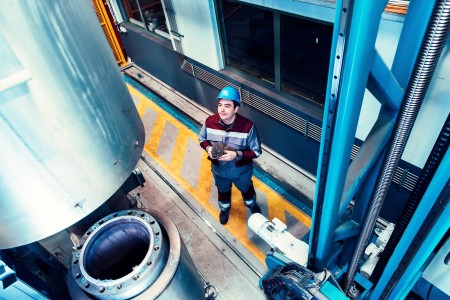Trade press, Daily press, 2015-12-18, 06:09 pm
Getting the right mix is key: thyssenkrupp begins operation of world’s first automated sinter test facility in Duisburg

Using different raw materials efficiently and achieving an optimized, eco-friendly compo-sition for steelmaking – that’s now possible at thyssenkrupp in Duisburg. After several years of research Steel Europe has started operation of the world’s first automated sinter test facility, which in the future will also help reduce emissions from the production sinter plant. The aim of the steel producer is to be able to adapt to the problem of vary-ing raw material quality through test sinter production: “Using the facility we will be able to react quickly to global changes in ore grades and offset differences flexibly. Thanks to full digitization of the test process we will be able to keep an eye not only on precise quality indicators but also the emissions contents of our charge materials,” says Dr. Urban Janhsen, head of the “Technology Ore and Iron” team at thyssenkrupp Steel Eu-rope AG. The test facility will be able to test in small batches how raw materials will be-have in mass production.
During sintering, fine grains of iron ore are mixed with other materials, heated intensely and baked together into lumps through fusing of the grain edges. The lump shape of the so-called sinter cake is necessary for the production of pig iron in the blast furnace. For the daily mass production of sinter the test facility will make it possible within a few hours to predict exactly the optimum mix of charge materials. From the weighing of samples before testing to examining the finished sinter, a robot will handle all handling and transport steps. For older or disabled employees the facility also meets high stand-ards in terms of ergonomics and occupational safety thanks to automation of handling and transport processes.
Another key innovation is precise dust analysis during the entire test process, designed to facilitate reductions in emissions. Dust emissions are measured by laser and can be assessed as representative samples. Thanks to the fully automated workflow, low-dust charge materials can be identified and the optimum charge mix determined. The facility was built with the support of Heat and Power Engineering GmbH (Stuttgart). The control model was supplied by Siemens AG.
The sinter test facility represents a further active contribution to improving the environ-mental situation in Duisburg. Only recently thyssenkrupp Steel Europe began building a further modern fabric filter that will capture almost 99.99 percent of the dust generated by sinter production. The filter is scheduled to start operation in spring 2017.




